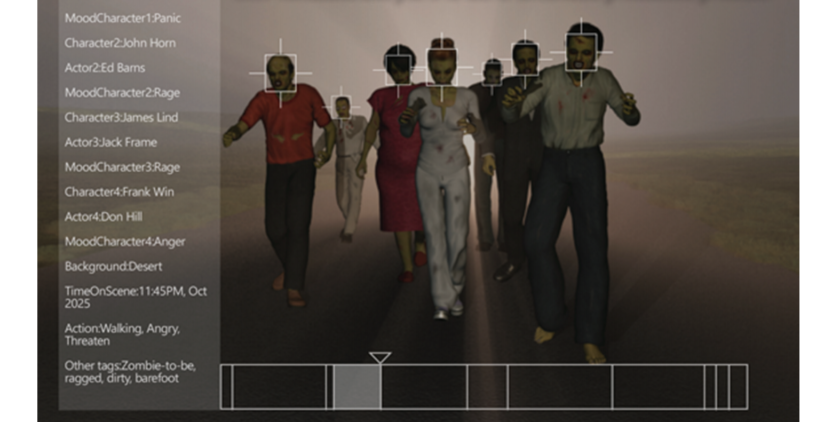Connections

M&E Journal: Put Your Film Data Into Focus With ‘Smart Production’
Story Highlights
By Jukka Paajanen, Regional Technology Innovation Lead, Avanade –
Imagine filming a movie. There is a vast array of details that reveal the “who, what, when, where and how” of the production process. Before you even shoot the first scene, you have already made a plethora of decisions, including contracting, scripting, casting, locations and props. During production, you add even more details on such issues as timing, product placements, scenes and assets. By the time the director yells, “That’s a wrap,” all that metadata has been recorded several times over by many different people. When distribution rolls around, you will have to access that information to verify residuals, product placement fees and other administrative decisions.
How media businesses currently manage the process, however, is fraught with challenges. Data is traditionally siloed, manually tracked, re-created in various formats and often never shared. Any gaps or inaccuracies can cost studios precious time and money. How do you know who or what was actually filmed and in what scenes? Who was dressed as that zombie or covered by that alien mask? How much do you owe and to whom? And how much can you claim from which brand? Try as you might to scrub through all the scenes and make an accurate estimation, you can never be absolutely sure unless you have a way to make that profusion of data meaningful. Having the right data in the right structure so that the information can be easily and immediately accessed is critical to planning, organizing and paying for productions.
Implementing a digital data solution can provide demonstrable efficiency benefits to the media industry. All you need is the right combination of technology and digital processes to ensure you get the right data at the right time. And that’s the beauty of smart production, or what we call the “smart production liquid data solution.”
Capture metadata upfront to streamline production
Once any project is complete, it is hard to go back and try to fill in the voids. Oftentimes, you don’t really know what you need until you realize you don’t have it. Smart production captures the data in real time during each phase of the production process and then automates the distribution of the data accordingly. This streamlined process provides greater financial accountability and agility to respond to evolving industry needs.
For example, the media industry today faces frequent and complex audits. The amount of payouts and the number of stakeholders for each film (and its multiple releases) are enormous, as is the process for tracking participation. So, having to research production data after the fact is not only cumbersome, but also expensive. Businesses do not need lawyers watching screenings with stopwatches to determine who is owed and how much. Digital integration offers a simpler, more reliable method.
Digitize data to increase its value
Without digital processes, it can be hard to find specific information. Automatic digital tracking makes it easier to search and find various details within a film scene, including faces, objects and visual effects. Among other things, this information can be used to produce predictive data on the financial implications of a specific cut or locate relevant clips for specials and promotions. Future capabilities of smart production could include automated facial recognition and speech-to-text functionalities to pinpoint key words.
Re-create data structures
Once a business captures the data, how it stores and shares the information is just as critical. Because media businesses frequently must insert the same information into multiple systems (often manually), the information gets lost or stuck in silos. And then what use is the data? Smart production envisions using an integration bus and data lake to collect, store and forward all relevant information between systems.
First, by using the integration bus approach, the systems can receive and prepopulate data into their own records. Since data structures change over time, especially as contracts and industry practices change, it is vital that they be more flexible.
Traditional data warehouses with forced reporting structures cannot easily adjust to change. Smart production provides agility, allowing the system to respond to data shifts and replace any of the source or target systems along the way. The rise of NoSQL or document databases, provided by companies such as MarkLogic, are indicative of this new trend.
Second, the data lake collects the information for speedy reporting. With traditional tools, this process meant dumping the data into multiple Microsoft Excel worksheets. With advanced reporting tools, such as Microsoft PowerBI, data is automatically sorted and analyzed. Users can make requests in natural language and instantly see exactly what they want.
For example, just type into the system “show all cast participants in movie X with time on screen as bar chart” and within moments, the chart appears. You can get variations of your data in ways that you have not yet imagined.
Smart production can offer media businesses a tremendous edge in the industry. Aside from the financial implications, it provides a single, coherent system with advanced reporting that can produce serious operational benefits—a streamlined process, less manual work and improved access to near real-time views of data for accurate and timely decision making. So now is the time to value that data, bring it into the digital age and start making it work for you.
—
Click here to translate this article
Click here to download the complete .PDF version of this article
Click here to download the entire Spring 2017 M&E Journal









